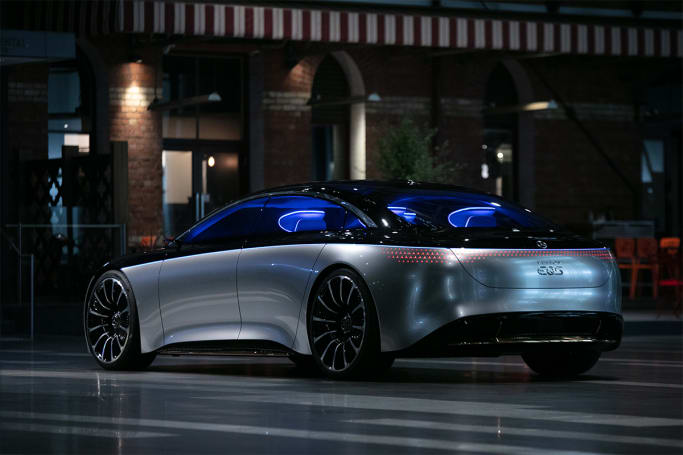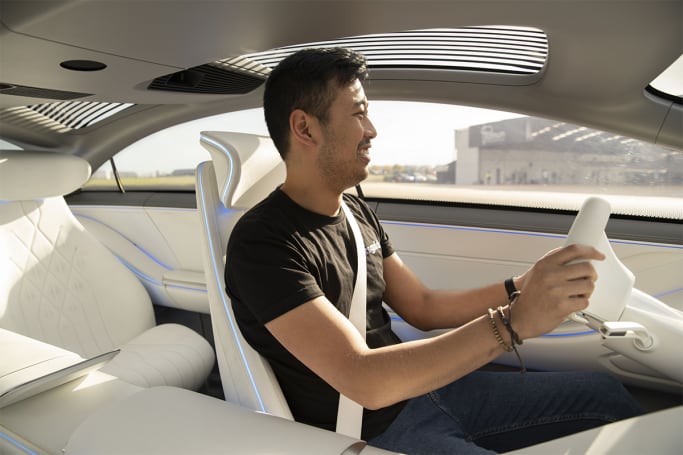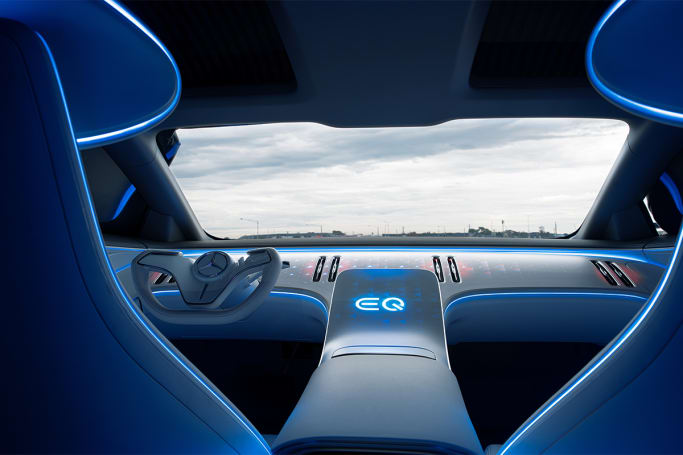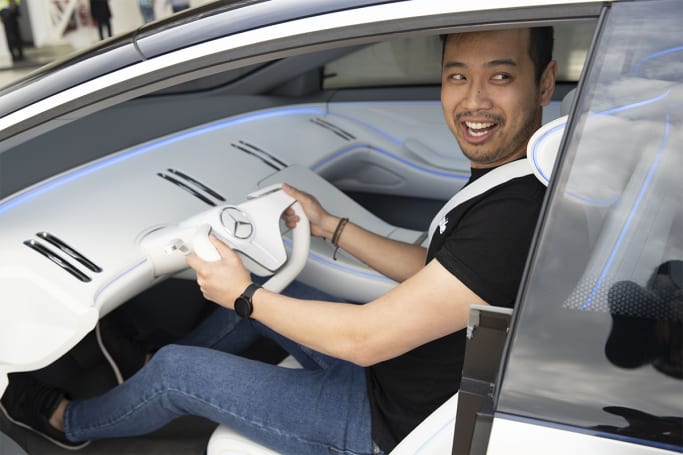View over 250 priceless machines from Petersen museum's famous 'Vault'
All from the comfort of your own home.
Browse over 9,000 car reviews

Concept cars are not meant to be driven, with the majority of them unveiled on a stage in some fancy European or American city to spend their life being gawked at from behind a velvet rope, then mothballed in some museum.
Not the Mercedes-Benz Vision EQS, though.
No, the German brand actually built the EQS concept – which was revealed at last year’s Frankfurt motor show – to be a functional vehicle that can actually be driven, albeit in short bursts on and off a show stage.
What’s it like to drive, though? Well, it would be unfair of us to give a proper full assesment to a concept car that cannot be driven on public roads, but – as expected – the EQS is less about the driving experience and more about the tech showcase.

The Vision EQS heralds a production model that is expected to hit around 2022 as the flagship to Mercedes’ EQ all-electric line-up, which kicked off last year with the local launch of the EQC SUV.
The EQA small hatchback and EQV people mover are also expected to enter production to fill out the EQ range, but think of the EQS as the all-electric S-Class-type jewel in Mercedes’ EV crown; big, stylish and a total tech fest.
It would make sense then that the concept also adopts these traits, with its ultra-sleek exterior design, minimalist cabin and almost sci-fi-levels of technology.
The EQS concept car is powered by two electric motors – one on each axle – that together deliver 350kW/760Nm. As a result, it is good for a zero to 100km/h run in just 4.5 seconds.

We weren't able to test the acceleration claim, which is understandble given that there is only one EQS in the world and it is followed by two minders everywhere it goes.
Driving range is supposedly 700km thanks to a 100kWh lithium-ion battery, which can be wirelessly charged, but again, we did not spend enough time behind the wheel to ascertain whether it would reach its claimed range.
What about the driving experience then? Does the EQS carve up turns like a sushi chef carves up tuna?
Well, being designed to drive on an off a stage means we've not information on the suspension components and our drive was confined to some low-speed bends.

We can say that the 24-inch wheels with ultra-low-profile tyres look amazing when stationary but transmit even the smallest bumps to the driver while on the move.
Occupant comfort isn’t helped by the super thin seats either, which offer no support for your back or thighs, while wind noise is prominent even at our low speeds, but is that important in a concept car?
It might sound like we hated our time behind the wheel of the EQS, but take a step back – and away from the driver’s seat – and then the reason for the EQS’ existence starts to come into focus.

From the outside, the EQS looks decidedly Tron-like thanks to its three-dimensional light-up front grille, holographic headlights and three-star-shaped tail-light array.
Large, uninterrupted panels that flow into each other give the illusion that the EQS is milled from a single block of metal, but design touches such as the copper accents on the lower body and subtle creases add more character.
And this is the design direction that will inform Mercedes-Benz vehicles for probably the next decade.
The next-generation S-Class, the new C-Class, the E-Class and even the smaller A-Class-based vehicles will probably borrow elements from the EQS.

Inside, the EQS is no less cutting edge, sporting a half steering wheel, light-piping throughout, and instrumentation and a multimedia system that is projected onto the dashboard.
In practical terms, the chopped-in-half steering wheel is diffucult to use because as soon as your turn the tiller more than 90 degrees, your hands have nowhere to reposition to!
While we didn’t get a chance to play with all the interior gadgets and gizmos, it's wonderful that Mercedes-Benz is thinking ahead and taking the ‘all-digital dashboard’ to the next level with projector technology.

Other bits and bobs that point to the EQS’ concept car nature are the handless doors (only the front set open and have to be operated by remote) and side-view cameras instead of mirrors (which could be ADR-friendly by the time the car hits production).
While most of these technologies will not make it over to the production version, the attention to detail and care put into the design and execution of the EQS is truly something to marvel at.
Even though it can be, the EQS is not meant to be driven, and that’s ok because it will inspire many other cars that will be.
Comments